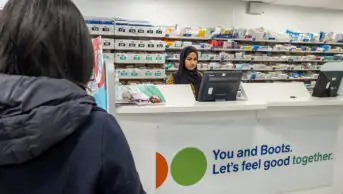
Shutterstock.com
The Guild of Healthcare Pharmacists (GHP) has launched a campaign calling for pharmacists working in the NHS to have a minimum of 10% of their contracted hours protected for supporting professional activities (SPA).
In a statement published on 7 February 2025, the GHP said that there was currently no consistency in the UK, or within any of the four nations, in terms of how much SPA time pharmacists are given.
It said: “There is, however, a consistent amount of development that is required to allow pharmacists to be able to be safe practitioners, to meet the demands of service development and to be able to safely mentor and supervise more junior colleagues.
“Many pharmacists end up doing unpaid work in order to catch up with the required training or end up completing self-learning in their own time. This pressure is unfair and unsustainable, potentially contributing to burnout, and in combination with all the other pressures, leads to pharmacists leaving the NHS.
“The GHP believes that there is a strongly justifiable argument for a minimum of 10% of contracted hours to be protected for SPA. This is to reflect the increase in professional responsibilities, such as supervising junior colleagues with their prescribing, supporting undergraduate students, postgraduate education requirements, portfolio development, professional credentialing and much more,” the statement added.
Rob Connah, president of the GHP, said the need for mandated protected learning time (PLT) had been made more pressing by the introduction of the General Pharmaceutical Council’s ‘Standards for the initial education and training of pharmacists’, which were published in 2021. Among other things, the new standards will see all newly-registered pharmacists able to prescribe independently from 2026.
He said: “There is a drastic increase of experiential learning, which places an emphasis on practice supervisors, and from 2025–2026, this will increase again to include a responsibility for developing safe prescribers at the point of registration.
“This increase in responsibility is a national expectation with little additional resource seen for individual pharmacists to accommodate. As services develop and become increasingly reliant upon specialist pharmacist skills and knowledge, the need for postgraduate qualifications has similarly increased. Services are limited by poor recruitment, retention and staff burnout.”
Claire Anderson, president of the Royal Pharmaceutical Society (RPS), said: “Governments, employers and NHS bodies must enable regular, funded, PLT and the infrastructure to support it to enable continuous professional development from foundation pharmacists to consultant level across Great Britain. We believe it is essential that learning time is considered in any future workforce plans.
“PLT was a key topic at our 2024 workforce wellbeing roundtable with Pharmacist Support, and it will remain central to discussions with stakeholders on collaborative efforts to better support the pharmacy workforce.”
In 2022, the RPS wrote to then Scottish health minister Hamza Yousaf, after he said he was committed to achieving PLT for healthcare professionals while speaking on a panel alongside Clare Morrison, then director for RPS Scotland.
Half of pharmacists who responded to The Pharmaceutical Journal’s 2020 salary survey said they were never given PLT.
The Department of Health and Social Care was contacted for comment.


